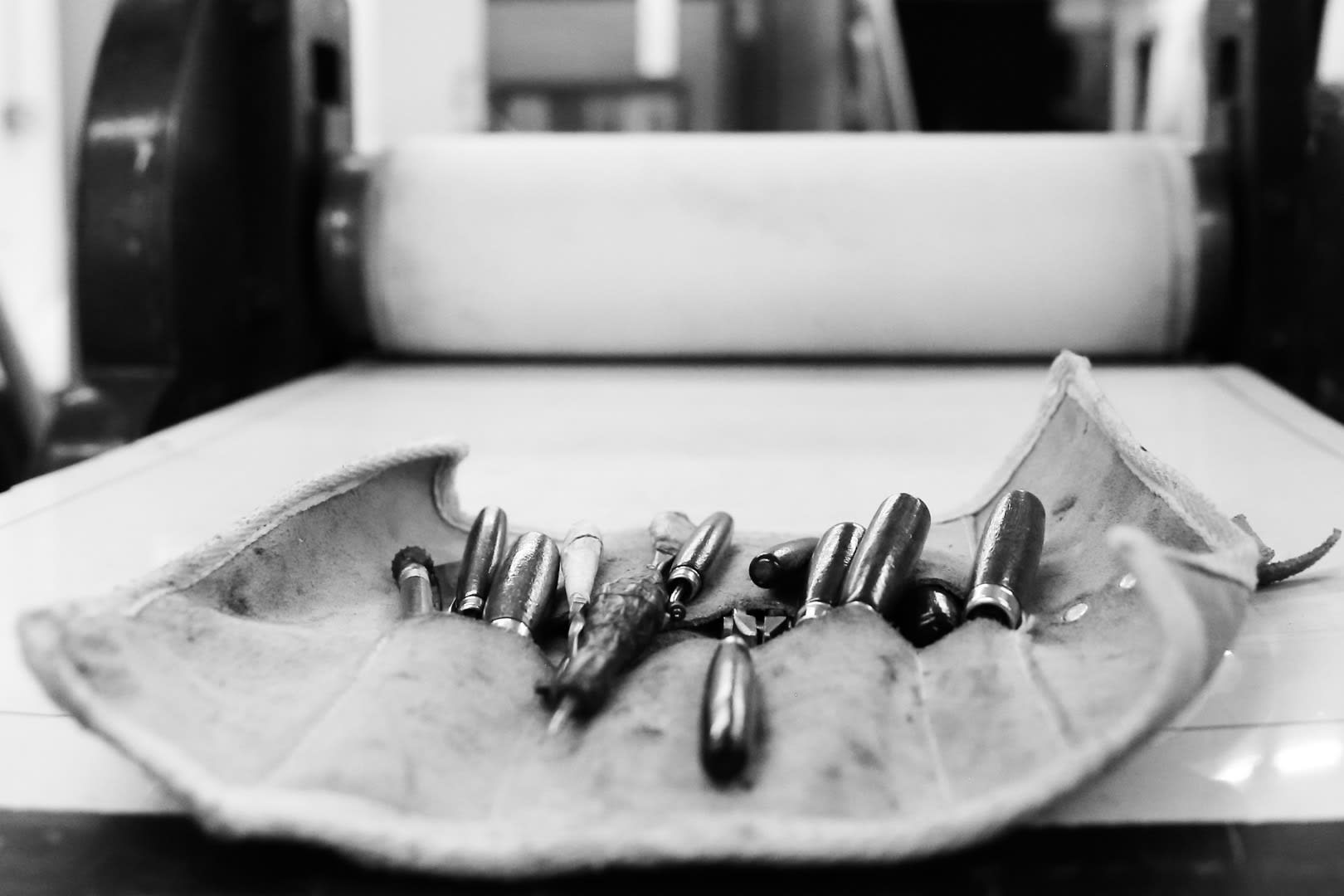-
Huguenot Editions
Huguenot Editions works with artists, publishers and museums from around the world to create fine art prints. We specialize in all intaglio and relief printmaking techniques, and have the facilities and experience to offer a diverse range of processes including:
Etching (hard and soft ground), Photo Etching, Photopolymer Gravure, Aquatints, Sugarlift and Carborundum along with printing from wood and linoleum.
Large format printing can be accommodated; our largest press is 3 x 1.5 m.
Services include a steel-facing facility for plates; this allows a longer edition to be produced from copper plates and is highly recommended when printing with colour on copper.
-
ETCHING GUIDE
Etching is a printmaking technique that involves using acid or other chemicals to carve an image or design onto a metal plate, typically made of copper, zinc, or steel. The process starts by coating the plate with a waxy, acid-resistant substance called a "ground." The artist then scratches or draws a design through this ground, exposing the metal beneath. Once the drawing is complete, the plate is submerged in an acid bath, which "bites" into the exposed metal areas, creating lines that will hold ink. After cleaning off the ground, the plate is inked and wiped, leaving ink only in the etched grooves. Finally, the plate is pressed onto paper to produce a print of the image. This method allows for highly detailed and expressive lines, making it a favorite among printmakers for centuries.
MULTI-PROCESS PRINTMAKING
FINISHES
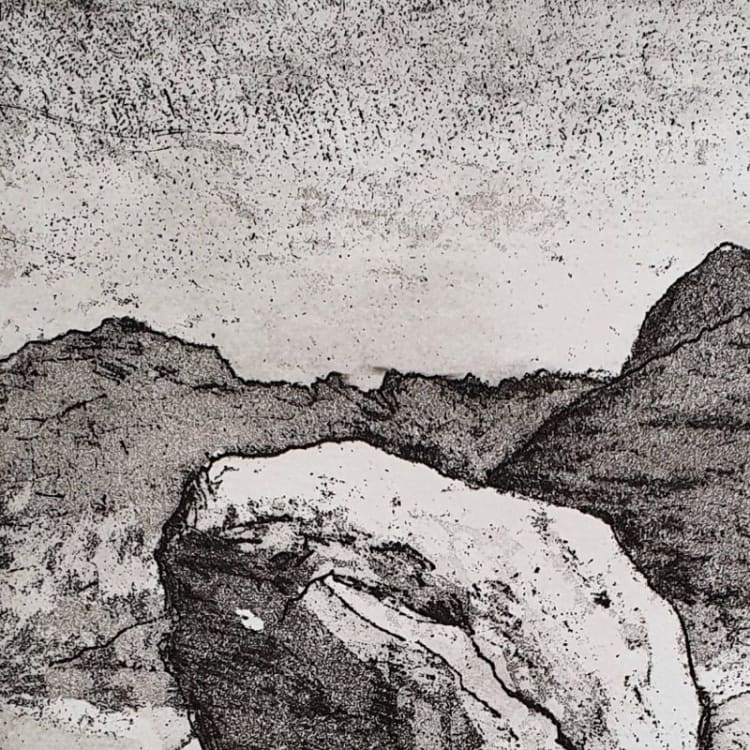
Etching | Hard & Soft Ground
Marks are made by drawing through a wax resist on a plate, then etched with acid. In hard ground etching, artists scratch through a smoked hard wax layer to reveal marks. Soft ground etching involves drawing on paper over the plate, where pencil pressure removes soft wax, allowing acid to etch the design. The plate is then inked and printed using a press.

Photo Etching
Photo etching, or photoengraving, combines photography with etching by transferring a photographic image onto a metal plate coated with light-sensitive emulsion. When exposed to light, the emulsion hardens, creating a resist, while acid etches the unprotected areas, embedding the image with depth. This technique produces fine, nuanced prints that blend photographic detail with the tactile quality of traditional etching.
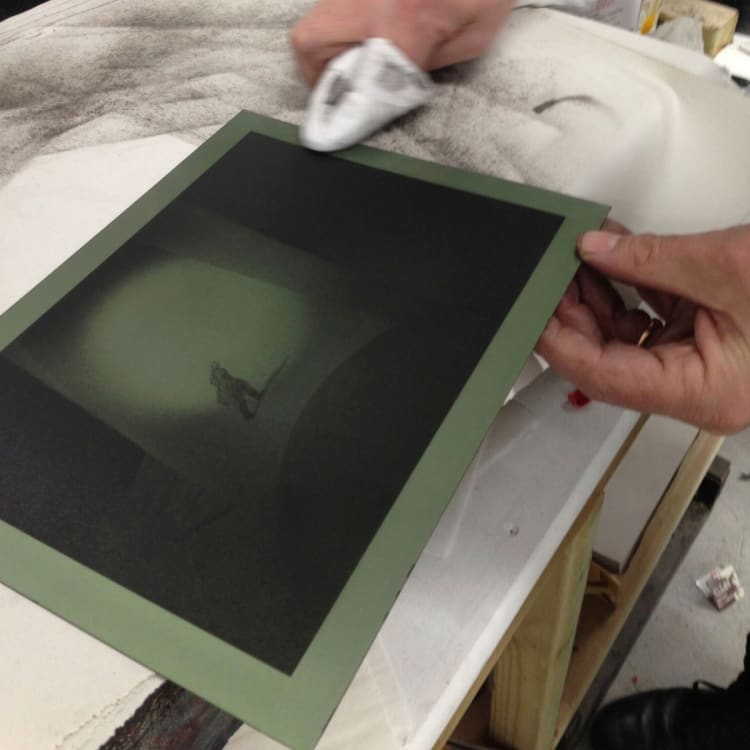
Photo Gravure
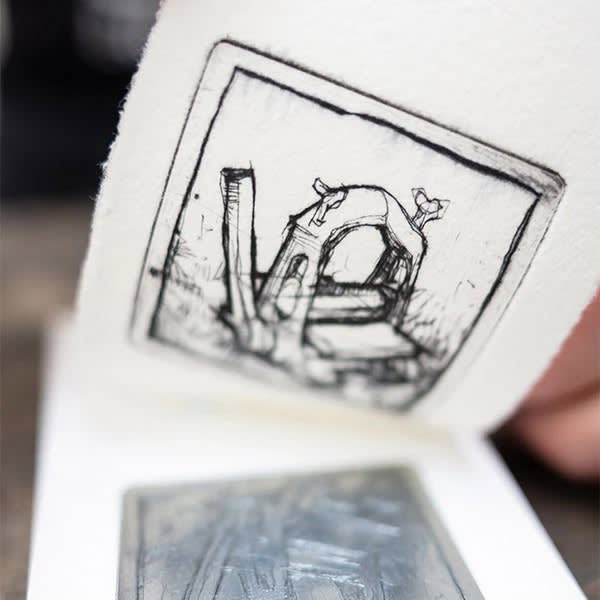
DRYPOINT
Drypoint is an intaglio technique where an artist scratches lines into a metal or acrylic plate using a sharp tool, without acid. The grooves and burrs created hold ink, giving drypoint prints their characteristic soft, velvety lines with rich, slightly blurred edges. This technique is prized for its expressive, textured lines, perfect for creating intimate, moody images with a handcrafted touch.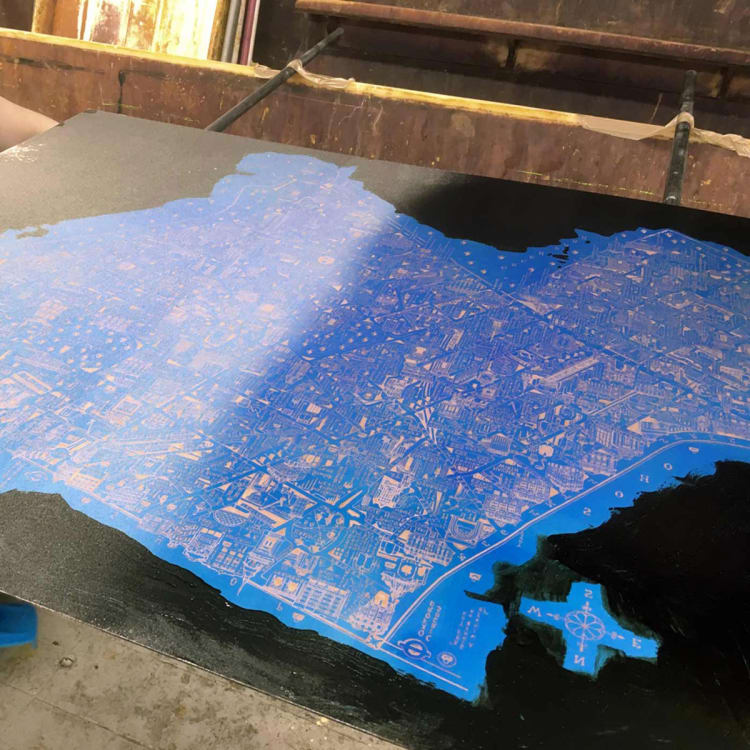
AQUATINT
Aquatint is an intaglio technique for creating watercolor-like tonal effects. A metal plate is coated with powdered resin and heated to adhere, then submerged in acid, which etches around the resin particles. This texture holds ink, producing tonal variations. By adjusting acid exposure or using stop-out varnishes, artists achieve gradations from light gray to deep black, making aquatint ideal for soft shading and adding depth to prints.

SUGARLIFT
Sugarlift etching is a technique that allows for expressive, painterly lines and textures. A sugar solution is painted onto a metal plate, and once dry, an aquatint ground is applied. The plate is then soaked, dissolving the sugar to reveal the image. When exposed to acid, the lifted areas are etched, creating rich, textured marks that bring a hand-drawn quality to the final print.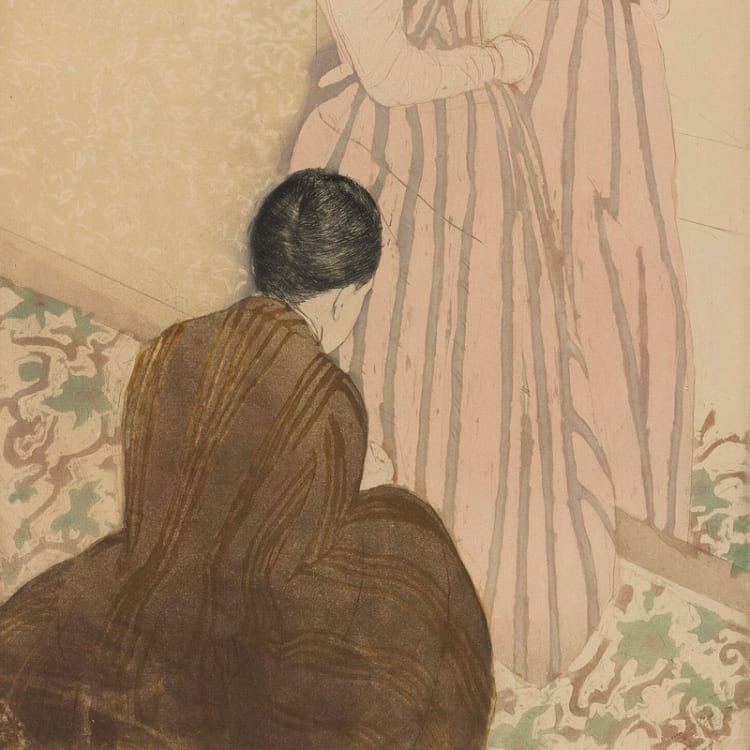
A LA POUPEE
À la poupée is a printmaking technique for applying multiple colors to an intaglio plate in one press pass. Named after the small cloth "dolls" used to dab ink, this method enables artists to color different areas of the plate directly, avoiding separate plates for each color. By blending inks on the plate, à la poupée creates vibrant, painterly effects with a unique, hand-colored quality in each print.
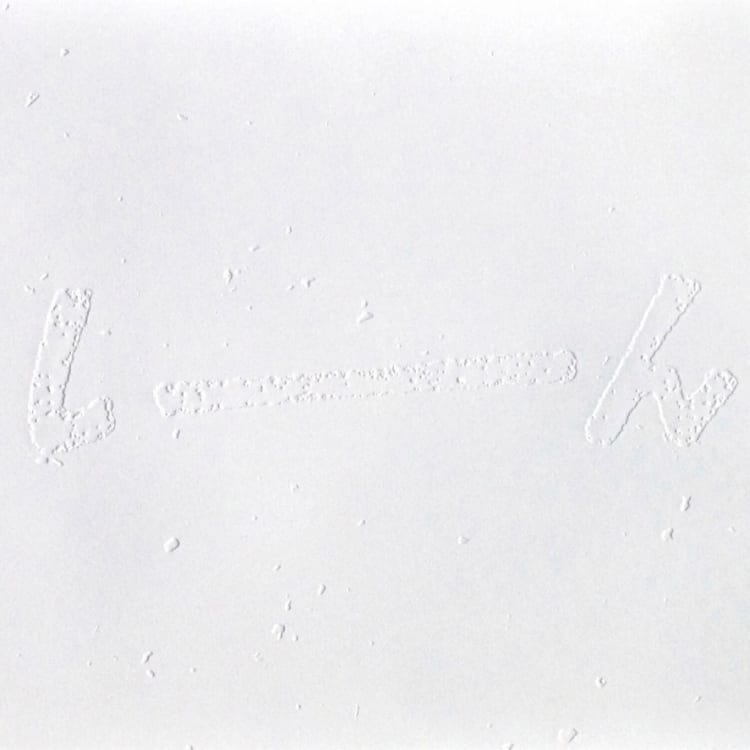
BLIND EMBOSSING
Blind embossing is a technique that creates a raised, ink-free design on paper. An artist presses a prepared plate or stencil into damp paper, producing a subtle relief that’s visible through light and shadow. Known for its understated elegance, blind embossing adds texture and depth to prints, book covers, and stationery, enhancing their tactile and minimalist appeal.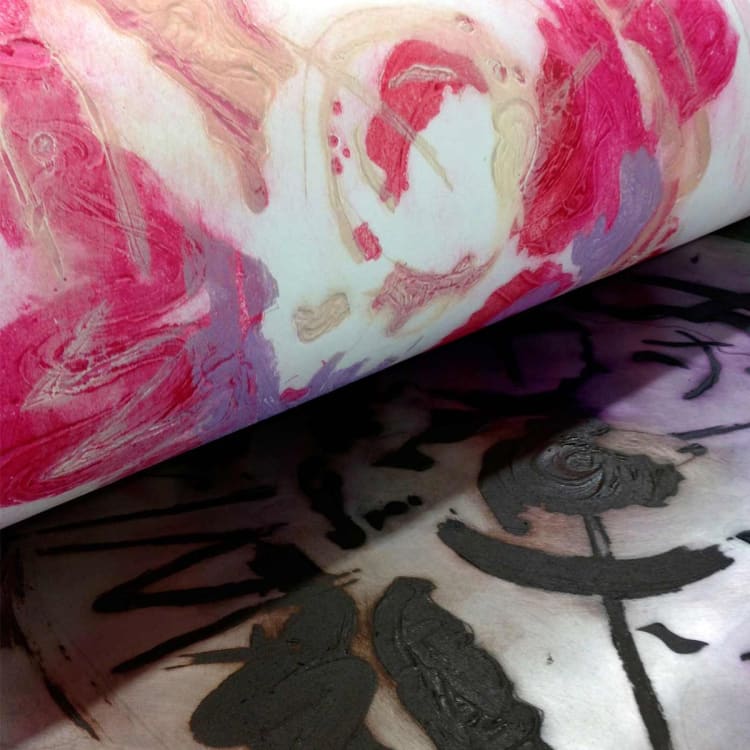
CARBORUNDUM
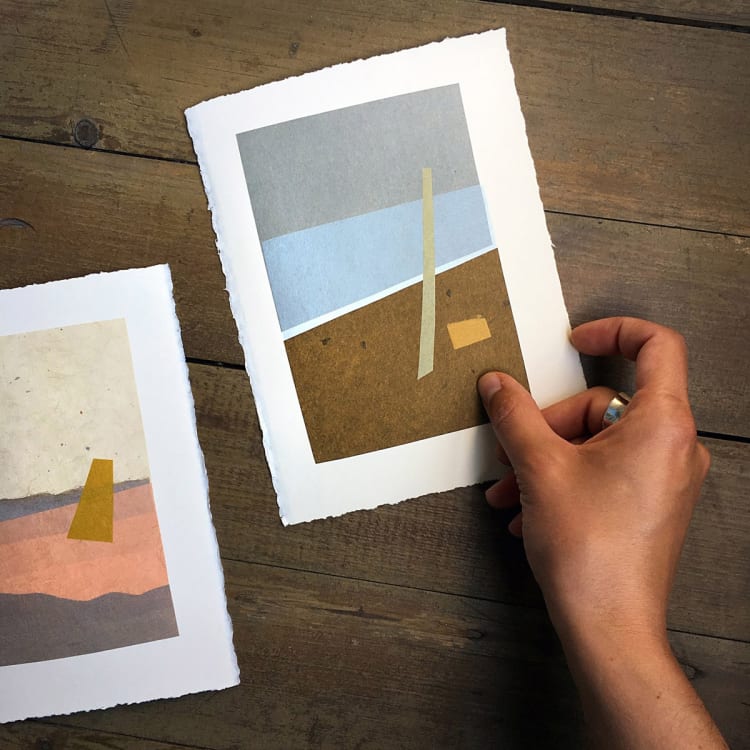
CHINE COLLE
Chine-collé is a printmaking technique that combines collage with traditional printing to add color, texture, or detail. A thin, delicate paper, often rice or Japanese paper, is placed on an inked plate and adhered to heavier paper during printing. This process creates layered effects and intricate details, adding depth and dimension to the final artwork.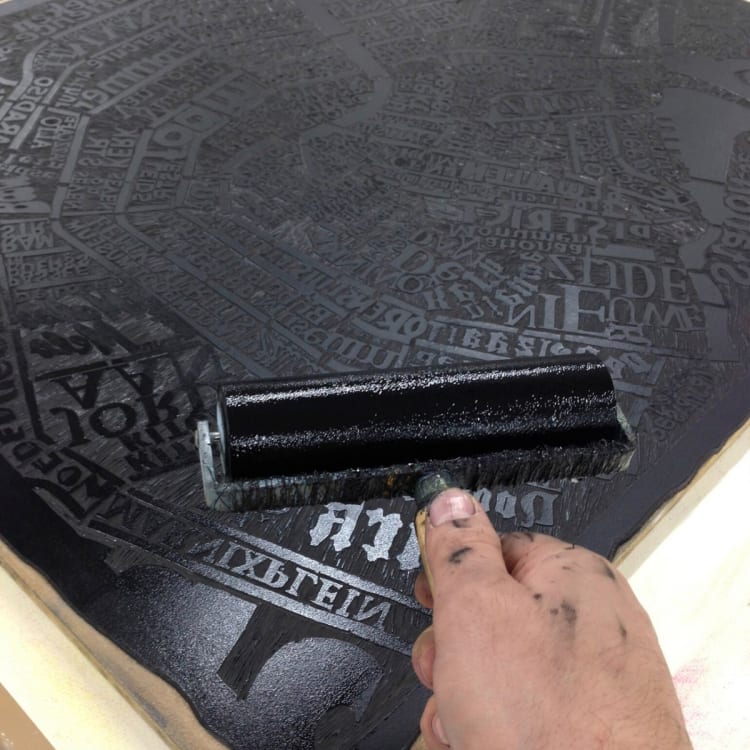
RELIEF PRINTS
Relief printing is a technique where an artist carves into a block, like wood or linoleum, leaving raised surfaces to hold ink. The inked block is then pressed onto paper, creating bold lines and strong contrasts. Known for its graphic quality, relief printing is used in both art and commercial applications, including woodcut, linocut, and letterpress methods.

HYBRID PRINTING
Hybrid printing combines multiple printmaking techniques, like relief, intaglio, lithography, and digital, in a single artwork. This approach enables artists to achieve unique textures, colors, and effects by layering or blending methods, creating rich compositions that extend beyond traditional printmaking. Hybrid printing is valued for its flexibility and creative potential.
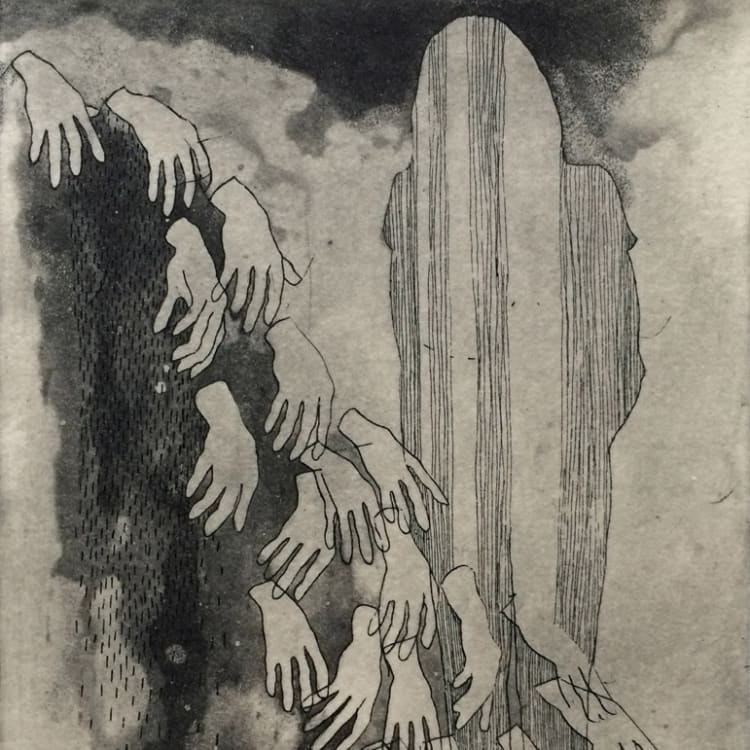
SPITBITE
Spit bite aquatint is an aquatint technique where the artist applies thickened acid directly to the plate with a brush, instead of submerging it. After applying an aquatint ground, the acid, traditionally mixed with spit, is painted onto the plate. This approach allows for controlled tones and creates a watercolor-like effect in the final print.
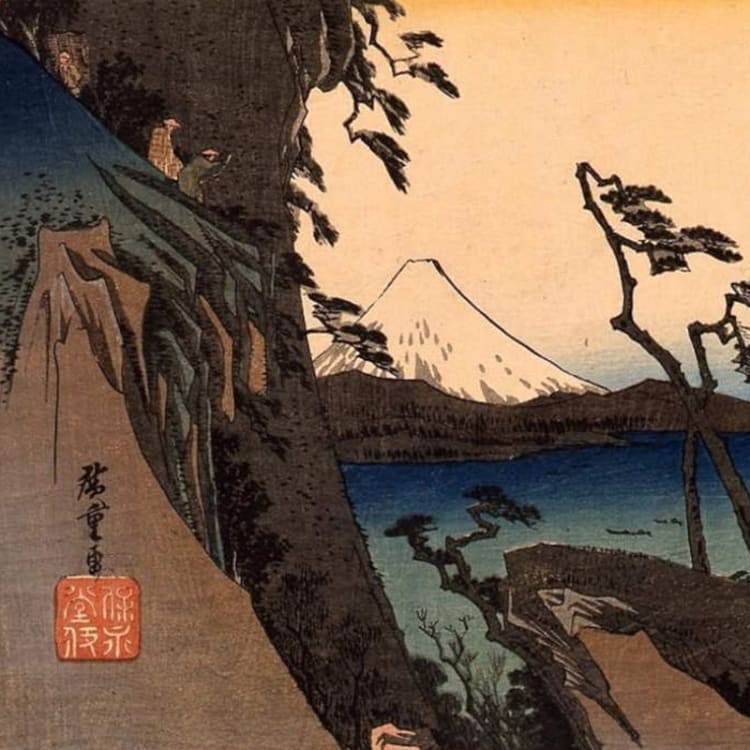
WOODCUT
Woodcut is an ancient printmaking technique where an artist carves an image into a wood block, leaving uncarved areas to hold ink. When pressed onto paper, these inked surfaces produce bold, graphic prints with strong contrasts. Woodcut has long been used for both fine art and book illustration.
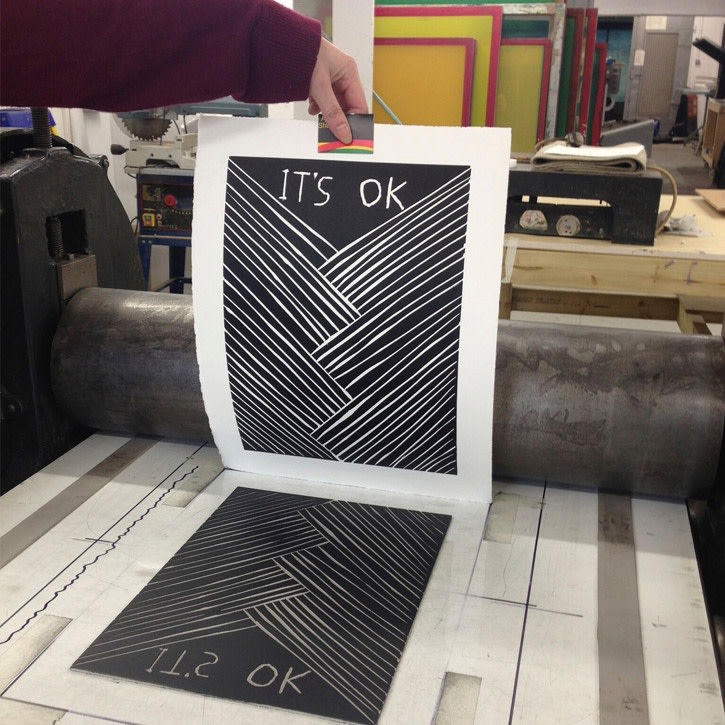
LINOCUT
Linocut is a relief printmaking technique like woodcut, but it uses a linoleum block, which is softer and easier to carve. The artist cuts away areas that will remain white, leaving raised surfaces to be inked. This technique allows for finer details and clean lines, making it ideal for bold, high-contrast images and expressive designs.
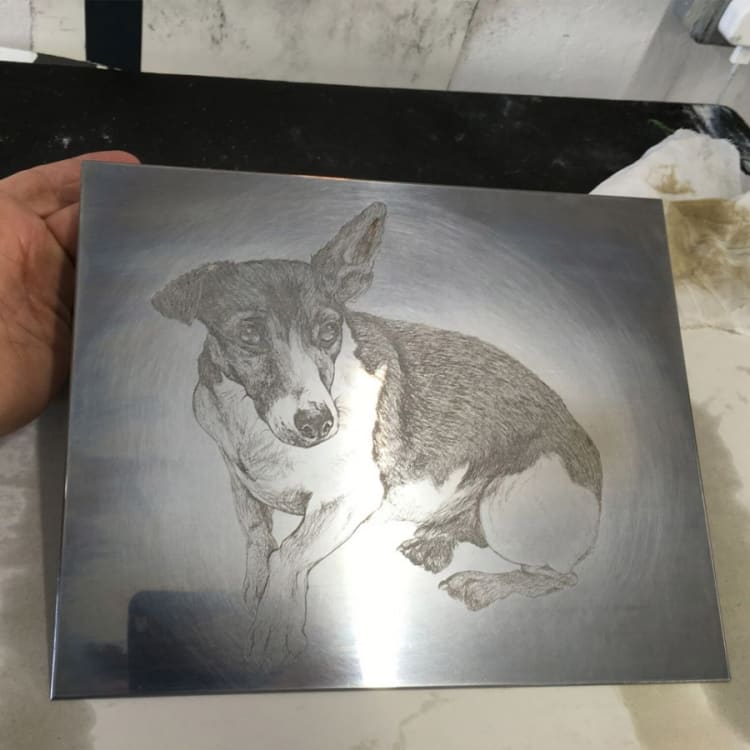
STEEL-FACING
Steel-facing is an intaglio technique that strengthens a copper plate by electroplating it with a thin steel layer, enhancing durability for repeated printing. This preserves fine details and textures, ensuring high-quality, consistent prints across an edition. After printing, the steel layer can be removed, returning to the original copper plate.
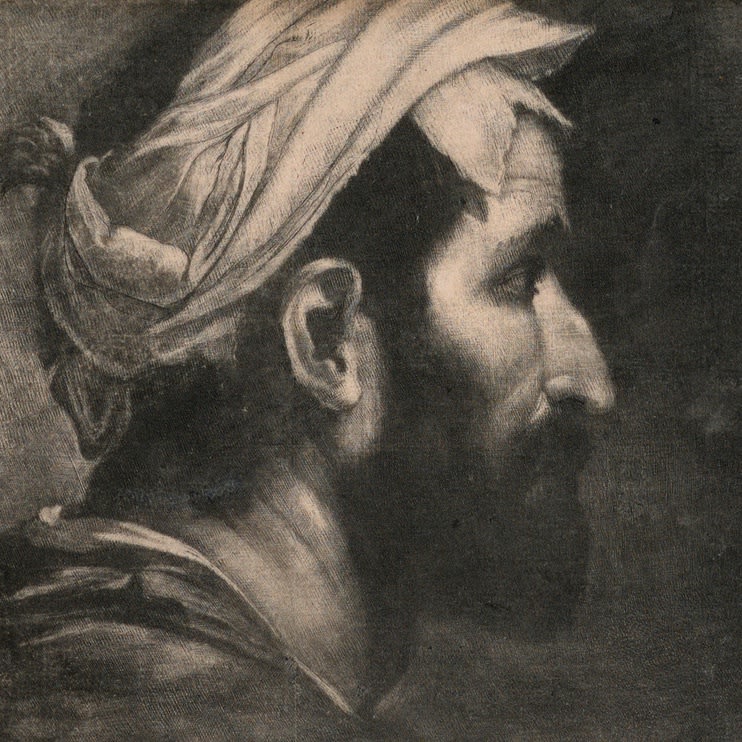
MEZZOTINT
Mezzotint is an intaglio technique that produces deep blacks and smooth tonal gradients. The artist roughens the plate’s surface with a rocker for solid blacks, then smooths areas with burnishers and scrapers for lighter tones. This creates a tonal range from dark blacks to bright highlights, valued for its dramatic contrasts, soft shadows, and painterly details.
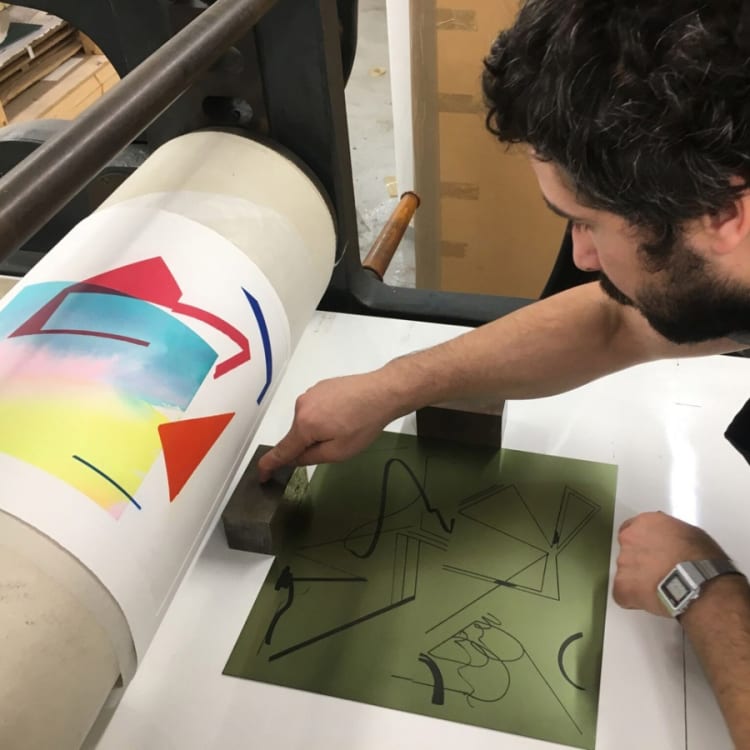
MULTI-PLATE
Multi-plate printing uses several plates, each with a different color, to create a layered image. Each plate represents part of the design, like outlines or shading, and is printed in sequence on the same paper. Precise alignment ensures colors blend cohesively, making this technique ideal for vibrant, multi-colored compositions with depth.
PRINT SIZE
ETCHING | PRINT & PAPER SIZES
- Victorian Etching Press - 40cm X 82cm
- Rochat Etching Press - 66cm X 112cm
- Rochat Etching Press - 66cm X 147cm
- Modbury Etching and relief press - 66cm X 147cm
- Multiple Paper Types Available
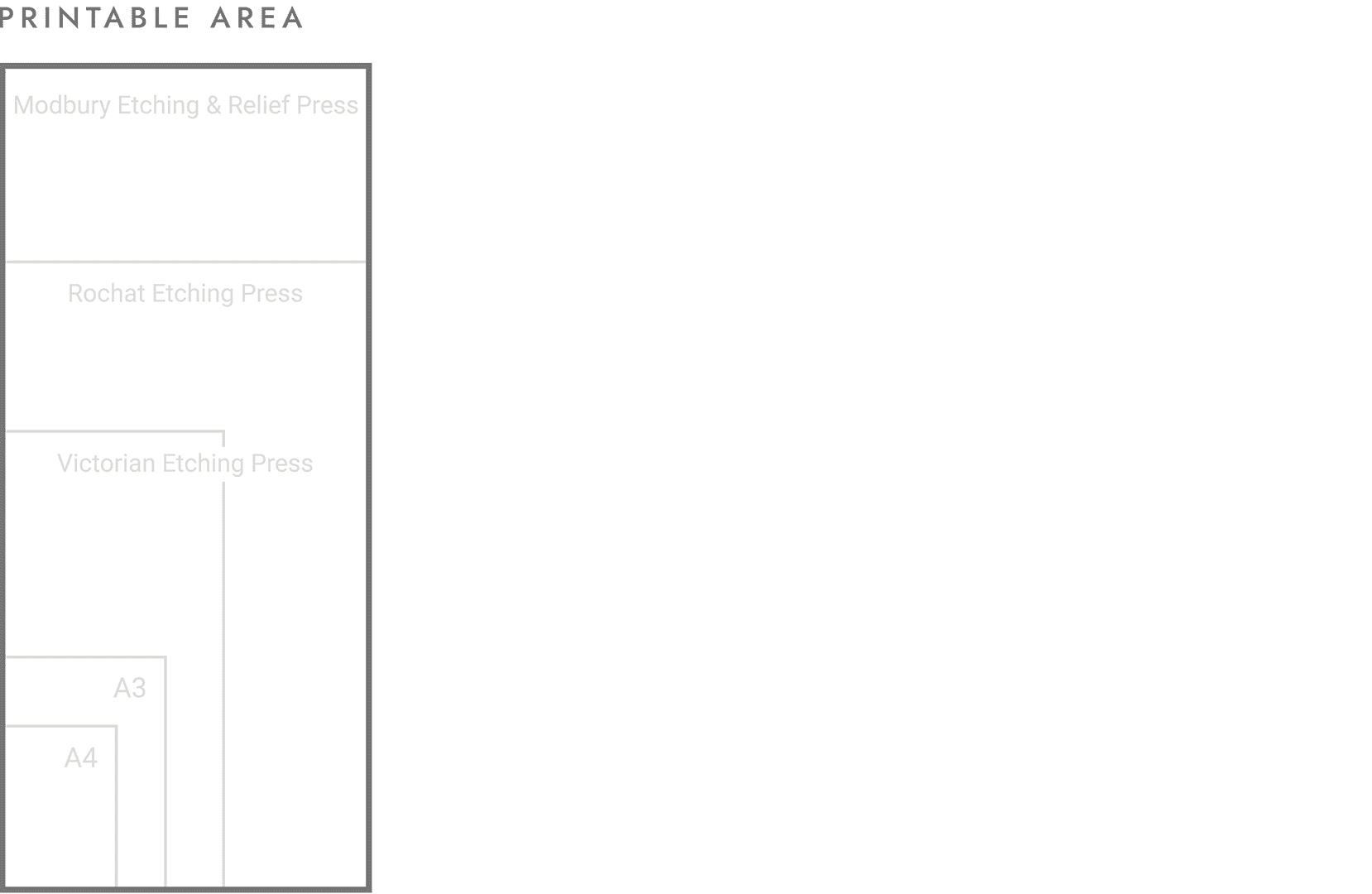
PAPER OPTIONS
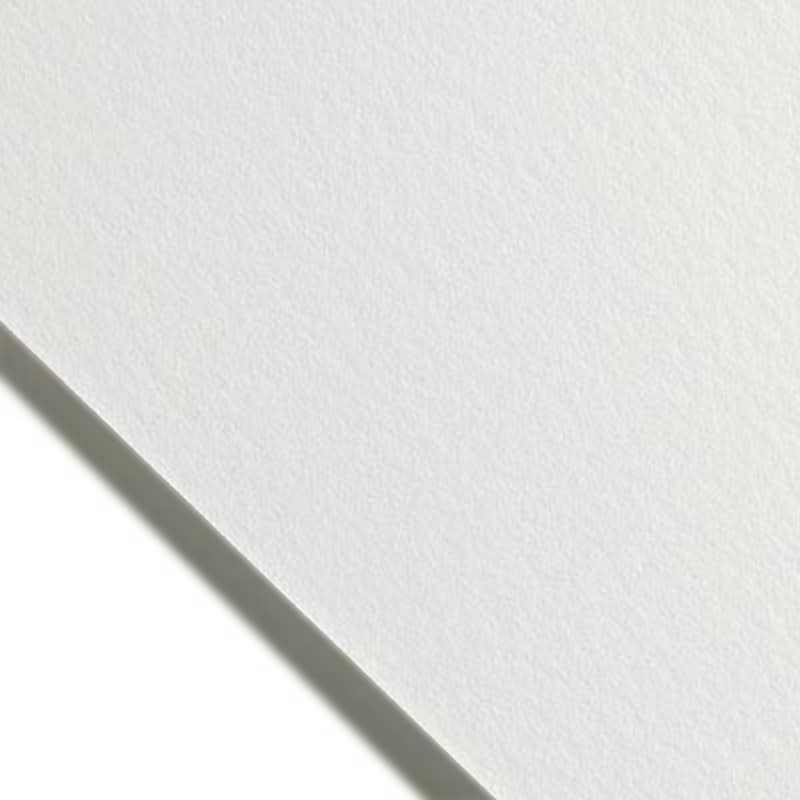
SATIN PAPERS
Fine art satin paper offers a smooth, slightly textured surface with a soft sheen, combining the elegance of matte finishes with a subtle touch of gloss. It enhances colour vibrancy while maintaining deep blacks and fine detail, making it ideal for high-quality art prints and photography. The satin finish minimises glare and fingerprints, providing a refined, professional appearance suitable for framing and display.
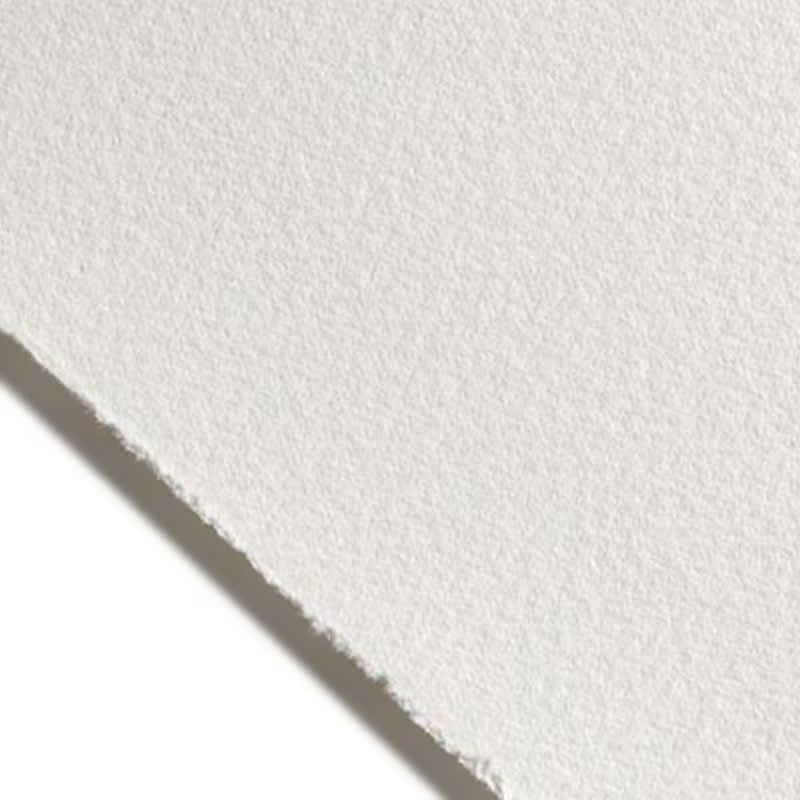
VELVET PAPERS
Velvet paper has a luxurious, soft texture with a rich, matte finish that gives artwork and photographs a sophisticated, tactile feel. Its textured surface enhances depth and detail, offering a slightly muted and painterly effect, making it perfect for fine art reproductions and high-end prints. The non-reflective quality ensures minimal glare, ideal for displaying in various lighting conditions, while its absorbent nature provides excellent color retention and subtle tonal variations.

Textured Papers
Textured paper has a distinctive surface that adds a tactile dimension to prints, enhancing the visual depth and character of artwork and photographs. Its rich, organic feel creates an authentic, hand-crafted look, making it ideal for fine art reproductions and illustrations. The textured finish diffuses light, reducing glare and giving images a soft, natural appearance, while its high absorbency ensures vibrant colours and intricate details are preserved.

SPECIALIST SUBSTRATES
Special substrates like canvas, fabrics, and holographic, gold, or silver mirror finishes offer diverse, eye-catching effects. Canvas provides a textured, traditional look, while fabrics add a soft, tactile quality. Holographic substrates create prismatic colour shifts, and gold or silver mirror options give a sleek, metallic sheen. Ideal for distinctive, high-impact visuals and multi-dimensional pieces.
PACKAGING & SHIPPING
ETCHING GUIDE
Etching is a printmaking technique that involves using acid or other chemicals to carve an image or design onto a metal plate, typically made of copper, zinc, or steel. The process starts by coating the plate with a waxy, acid-resistant substance called a "ground." The artist then scratches or draws a design through this ground, exposing the metal beneath. Once the drawing is complete, the plate is submerged in an acid bath, which "bites" into the exposed metal areas, creating lines that will hold ink. After cleaning off the ground, the plate is inked and wiped, leaving ink only in the etched grooves. Finally, the plate is pressed onto paper to produce a print of the image. This method allows for highly detailed and expressive lines, making it a favorite among printmakers for centuries.

Etching | Hard & Soft Ground
Marks are made by drawing through a wax resist on a plate, then etched with acid. In hard ground etching, artists scratch through a smoked hard wax layer to reveal marks. Soft ground etching involves drawing on paper over the plate, where pencil pressure removes soft wax, allowing acid to etch the design. The plate is then inked and printed using a press.

Photo Etching
Photo etching, or photoengraving, combines photography with etching by transferring a photographic image onto a metal plate coated with light-sensitive emulsion. When exposed to light, the emulsion hardens, creating a resist, while acid etches the unprotected areas, embedding the image with depth. This technique produces fine, nuanced prints that blend photographic detail with the tactile quality of traditional etching.

Photo Gravure

DRYPOINT
Drypoint is an intaglio technique where an artist scratches lines into a metal or acrylic plate using a sharp tool, without acid. The grooves and burrs created hold ink, giving drypoint prints their characteristic soft, velvety lines with rich, slightly blurred edges. This technique is prized for its expressive, textured lines, perfect for creating intimate, moody images with a handcrafted touch.
AQUATINT
Aquatint is an intaglio technique for creating watercolor-like tonal effects. A metal plate is coated with powdered resin and heated to adhere, then submerged in acid, which etches around the resin particles. This texture holds ink, producing tonal variations. By adjusting acid exposure or using stop-out varnishes, artists achieve gradations from light gray to deep black, making aquatint ideal for soft shading and adding depth to prints.

SUGARLIFT
Sugarlift etching is a technique that allows for expressive, painterly lines and textures. A sugar solution is painted onto a metal plate, and once dry, an aquatint ground is applied. The plate is then soaked, dissolving the sugar to reveal the image. When exposed to acid, the lifted areas are etched, creating rich, textured marks that bring a hand-drawn quality to the final print.
A LA POUPEE
À la poupée is a printmaking technique for applying multiple colors to an intaglio plate in one press pass. Named after the small cloth "dolls" used to dab ink, this method enables artists to color different areas of the plate directly, avoiding separate plates for each color. By blending inks on the plate, à la poupée creates vibrant, painterly effects with a unique, hand-colored quality in each print.

BLIND EMBOSSING
Blind embossing is a technique that creates a raised, ink-free design on paper. An artist presses a prepared plate or stencil into damp paper, producing a subtle relief that’s visible through light and shadow. Known for its understated elegance, blind embossing adds texture and depth to prints, book covers, and stationery, enhancing their tactile and minimalist appeal.
CARBORUNDUM

CHINE COLLE
Chine-collé is a printmaking technique that combines collage with traditional printing to add color, texture, or detail. A thin, delicate paper, often rice or Japanese paper, is placed on an inked plate and adhered to heavier paper during printing. This process creates layered effects and intricate details, adding depth and dimension to the final artwork.
RELIEF PRINTS
Relief printing is a technique where an artist carves into a block, like wood or linoleum, leaving raised surfaces to hold ink. The inked block is then pressed onto paper, creating bold lines and strong contrasts. Known for its graphic quality, relief printing is used in both art and commercial applications, including woodcut, linocut, and letterpress methods.

HYBRID PRINTING
Hybrid printing combines multiple printmaking techniques, like relief, intaglio, lithography, and digital, in a single artwork. This approach enables artists to achieve unique textures, colors, and effects by layering or blending methods, creating rich compositions that extend beyond traditional printmaking. Hybrid printing is valued for its flexibility and creative potential.

SPITBITE
Spit bite aquatint is an aquatint technique where the artist applies thickened acid directly to the plate with a brush, instead of submerging it. After applying an aquatint ground, the acid, traditionally mixed with spit, is painted onto the plate. This approach allows for controlled tones and creates a watercolor-like effect in the final print.

WOODCUT
Woodcut is an ancient printmaking technique where an artist carves an image into a wood block, leaving uncarved areas to hold ink. When pressed onto paper, these inked surfaces produce bold, graphic prints with strong contrasts. Woodcut has long been used for both fine art and book illustration.

LINOCUT
Linocut is a relief printmaking technique like woodcut, but it uses a linoleum block, which is softer and easier to carve. The artist cuts away areas that will remain white, leaving raised surfaces to be inked. This technique allows for finer details and clean lines, making it ideal for bold, high-contrast images and expressive designs.

STEEL-FACING
Steel-facing is an intaglio technique that strengthens a copper plate by electroplating it with a thin steel layer, enhancing durability for repeated printing. This preserves fine details and textures, ensuring high-quality, consistent prints across an edition. After printing, the steel layer can be removed, returning to the original copper plate.

MEZZOTINT
Mezzotint is an intaglio technique that produces deep blacks and smooth tonal gradients. The artist roughens the plate’s surface with a rocker for solid blacks, then smooths areas with burnishers and scrapers for lighter tones. This creates a tonal range from dark blacks to bright highlights, valued for its dramatic contrasts, soft shadows, and painterly details.

MULTI-PLATE
Multi-plate printing uses several plates, each with a different color, to create a layered image. Each plate represents part of the design, like outlines or shading, and is printed in sequence on the same paper. Precise alignment ensures colors blend cohesively, making this technique ideal for vibrant, multi-colored compositions with depth.
PRINT SIZE
ETCHING | PRINT & PAPER SIZES
- Victorian Etching Press - 40cm X 82cm
- Rochat Etching Press - 66cm X 112cm
- Rochat Etching Press - 66cm X 147cm
- Modbury Etching and relief press - 66cm X 147cm
- Multiple Paper Types Available


SATIN PAPERS
Fine art satin paper offers a smooth, slightly textured surface with a soft sheen, combining the elegance of matte finishes with a subtle touch of gloss. It enhances colour vibrancy while maintaining deep blacks and fine detail, making it ideal for high-quality art prints and photography. The satin finish minimises glare and fingerprints, providing a refined, professional appearance suitable for framing and display.

VELVET PAPERS
Velvet paper has a luxurious, soft texture with a rich, matte finish that gives artwork and photographs a sophisticated, tactile feel. Its textured surface enhances depth and detail, offering a slightly muted and painterly effect, making it perfect for fine art reproductions and high-end prints. The non-reflective quality ensures minimal glare, ideal for displaying in various lighting conditions, while its absorbent nature provides excellent color retention and subtle tonal variations.

Textured Papers
Textured paper has a distinctive surface that adds a tactile dimension to prints, enhancing the visual depth and character of artwork and photographs. Its rich, organic feel creates an authentic, hand-crafted look, making it ideal for fine art reproductions and illustrations. The textured finish diffuses light, reducing glare and giving images a soft, natural appearance, while its high absorbency ensures vibrant colours and intricate details are preserved.

SPECIALIST SUBSTRATES
Special substrates like canvas, fabrics, and holographic, gold, or silver mirror finishes offer diverse, eye-catching effects. Canvas provides a textured, traditional look, while fabrics add a soft, tactile quality. Holographic substrates create prismatic colour shifts, and gold or silver mirror options give a sleek, metallic sheen. Ideal for distinctive, high-impact visuals and multi-dimensional pieces.
-
